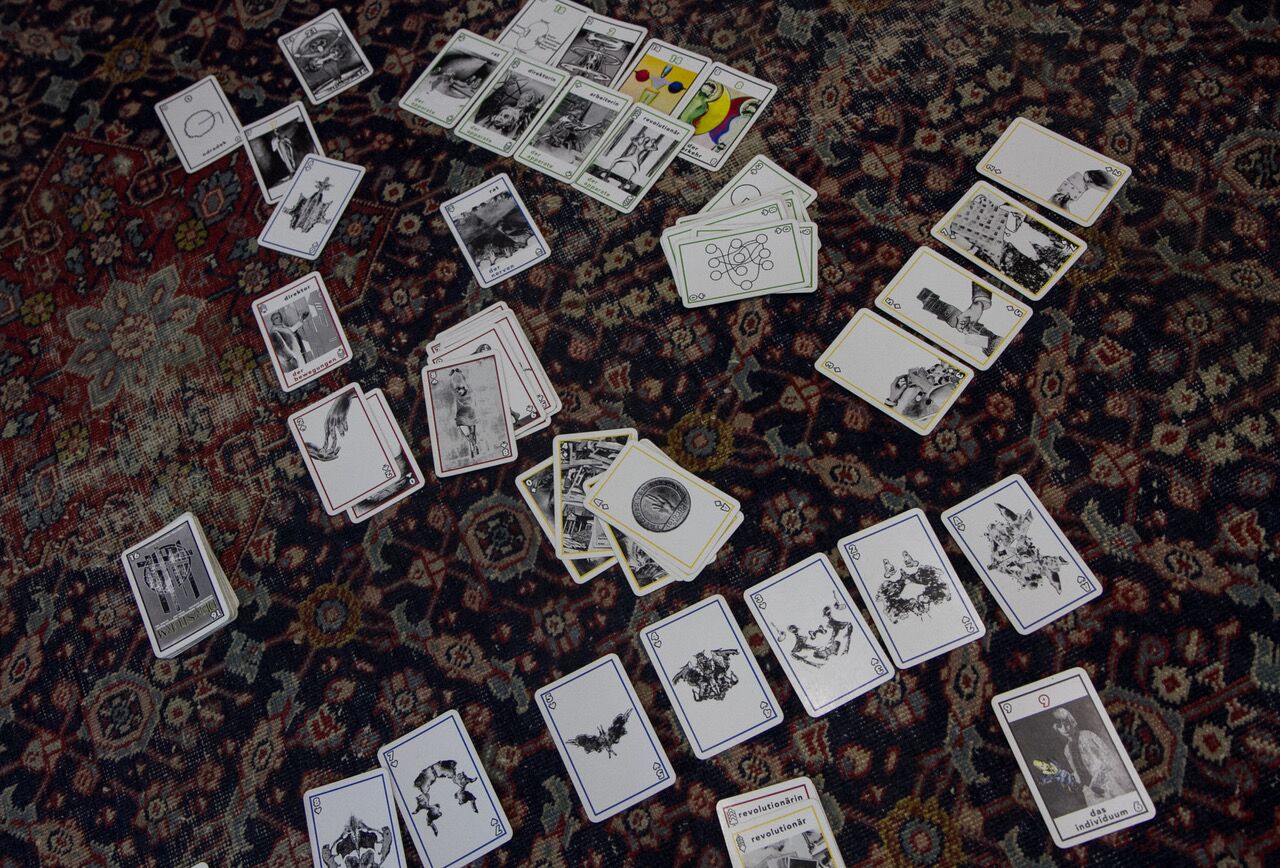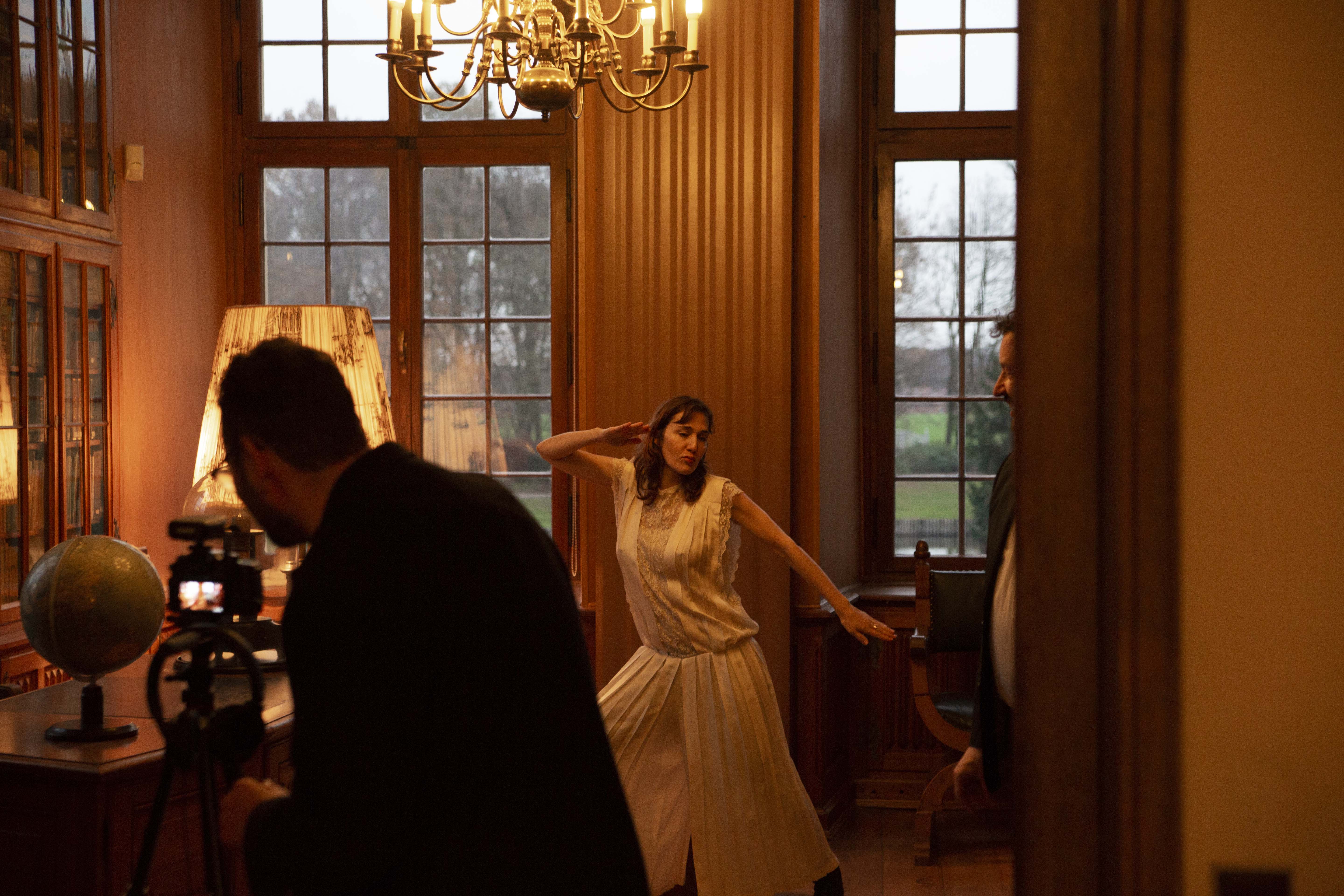Biedermeier-Phantasma - what is it?! In the 19th century, Biedermeier was a reaction to the end of the Napoleonic era. The retreat into the home, an intensified family life, chamber music, embroidery, sewing - these were the characteristics of this epoch.Even today, globalization, wars and refugee migrations lead to an increasing shaking of the pre-stable political landscape. The sense of crisis is permanent. What follows? Fear of the speed of life (we are being overrun), of powerlessness in the face of global dynamics (we are being overrun), and of the loss of our privacy due to the digitalization of the world (we are being monitored).
All of this leads to a flight back into the tried and true - into the private home. A ghost is haunting Germany, the neo-Biedermeier. The oak cabinet is in again, as is handicraft. The world is on fire, and people are spinning themselves into their cocoon. The series The Biedermeier Phantasm knocks on this ideal world with a voice hammer. Together with all the flowered wallpaper and decorative Biedermeier furniture, all the knightly armor and oversized coats of arms, Hülshoff Castle opens itself up to a questioning of its own history, its own premises and its own phantasms with the help of very different artists. And in European thought, phantasma means "inner image". But elsewhere (for example in México) the phantasm is quite simply - yes! ghost.

The Biedermeier Phantasm #1: Spooks from Inside
with Lina Krüger and Anna Zett
A ghost is haunting Germany, the Neo-Biedermeier.
In the 19th century, Biedermeier was a reaction to the end of the Napoleonic era. What was it that made this era so special? The retreat into the home, an intensified family life, chamber music, embroidery, sewing.
Today, too, globalization, wars and refugee migrations are increasingly shaking up the pre-stable political landscape. The sense of crisis is permanent. What follows? Fear of the speed of life (we are being overrun), of powerlessness in the face of global dynamics (we are being overrun), and of the loss of our privacy due to the digitalization of the world (we are being monitored).
All of this again leads to a flight into the tried and true - the private home. Oak cabinetry is back in, as is handmade. The world is on fire, and people are spinning themselves into their cocoon. The series The Biedermeier Phantasm knocks on this ideal world with a voice hammer. Together with all the flowered wallpaper and decorative Biedermeier furniture, all the knightly armor and oversized coats of arms, Hülshoff Castle opens itself up to a questioning of its own history, its own premises and its own phantasms.
And phantasma in European thought means "inner image". Elsewhere, however (in México, for example), the phantasm is quite simply - yes! ghost.
My home is your castle.
— Annette von Droste-Hülshoff
Part 1 of the Biedermeier phantasm is then also haunted - by voices, that is, especially by one's own voice. The feudal references of the tarot meet the revolutionary mythologies of modernity. The tarot card game Industry and Happiness, designed by the artist and author Anna Zett, plays with motifs - no, not of Biedermeier - but of the Weimar Republic, i.e. a time that meant a real social break: the one towards democracy. The last remnants of Biedermeier disappeared from the cities. And, as always in turbulent times, the contradictions also become denser: What does it mean, politically and emotionally, to cast one's vote? Who has no voice, and why? How do I find my own voice, and to what end?
Accompanied by musician and performer Lina Krüger, Anna Zett lays the cards of her deck in a participatory group session. The voices of all participants are activated to find out together what cards like "The Council of Nerves", "The Persona" or "The Five of Papers" might mean. Listening, tuning in, voting, disagreeing. What is true? What is not?

Das Biedermeier-Phantasma #2: Zimmerfluchten
with
Manuel Gogos
Daniel Laufer
Janne Nora Kummer, Fabian Raith, Leoni Voegelin (M.A. Spiel und Objekt der Hochschule für Schauspiel Ernst Busch Berlin)
The second part of the series The Biedermeier Phantasm is about room trips and escapes. And the vanishing point here is the future of the Droste Museum at Hülshoff. Because the museum, like the entire castle, is going to change a lot in the coming years. Let's look together at where it could go. To do so, we will - as always - use the arts.
First: moving images. Artist Daniel Laufer makes films that are about perception itself, more concretely: about how we perceive spaces. The people in the films look through windows and at wallpaper or carpets, and together with their thoughts our gazes wander. Timeline his latest room trip, was partly shot at Hülshoff Castle and moves through times and places. Besides the rooms of the castle, limestone caves in Israel are traversed and in between the Latvian sea foams. As part of the Biedermeier-Phantasma, Daniel Laufer presents Timelime for the first time at the castle.
Second: Soundtracks. Two audio tracks by Manuel Gogos, feature and filmmaker, guide you through the museum. In Reise um den Tag in 80 Welten, he ponders the neo-Biedermeier of our years. And in a suite of rooms, he sends you, the audience, to the Indian landscape that Annette von Droste-Hülshoff cut into paper with scissors. This artwork, however, is currently in the traveling exhibition Sehnsucht in die Ferne. So what do we do to see it? Listen to the sound tracks. And let our imaginations run wild.
And third, we play. In a game jam, Janne Nora Kummer, Fabian Raith and Leoni Voegelin will work with you to cut paths through the current exhibition - towards a new museum. With the help of digital means, we can look at the objects in the Droste Museum in a completely different way. We see more, see differently, hear differently. And so, between rooms of carpets, chests of drawers, pianos, curtains, floorboards, the future can be experienced.
I wanna dance with some Biedermeier who loves me.
— Annette von Droste-Hülshoff
In the series The Biedermeier Phantasm, we examine how we react to changes in the world: do we retreat to the private sphere or do we come to terms with things? To kick things off, the media artist Anna Zett and the musician Lina Krüger will read your tarot cards. The motifs on the cards do not come the repertory of castles and nobility, but instead from the Weimar Republic. What do votes and voices have to do with each other?
- Manuel Gogos
- Janne Nora Kummer
- Daniel Laufer
- Miriam Michel
- Rasmus Nordholt-Frieling
- Fabian Raith
- Lina Krüger, Leoni Voegelin (M.A. Spiel und Objekt der Hochschule für Schauspiel Ernst Busch Berlin), Anna Zett, Schüler*innen des Annette-von-Droste-Hülshoff-Gymnasiums Münster und der Friedensreich Hundertwasser Schule Roxel Theater Münster

The series The Biedermeier Phantasm is curated by Jörg Albrecht and Manuel Gogos and is a production of Burg Hülshoff - Center for Literature. The conception of the series was made possible by a grant from the Ministry of Culture and Science of the State of North Rhine-Westphalia.
